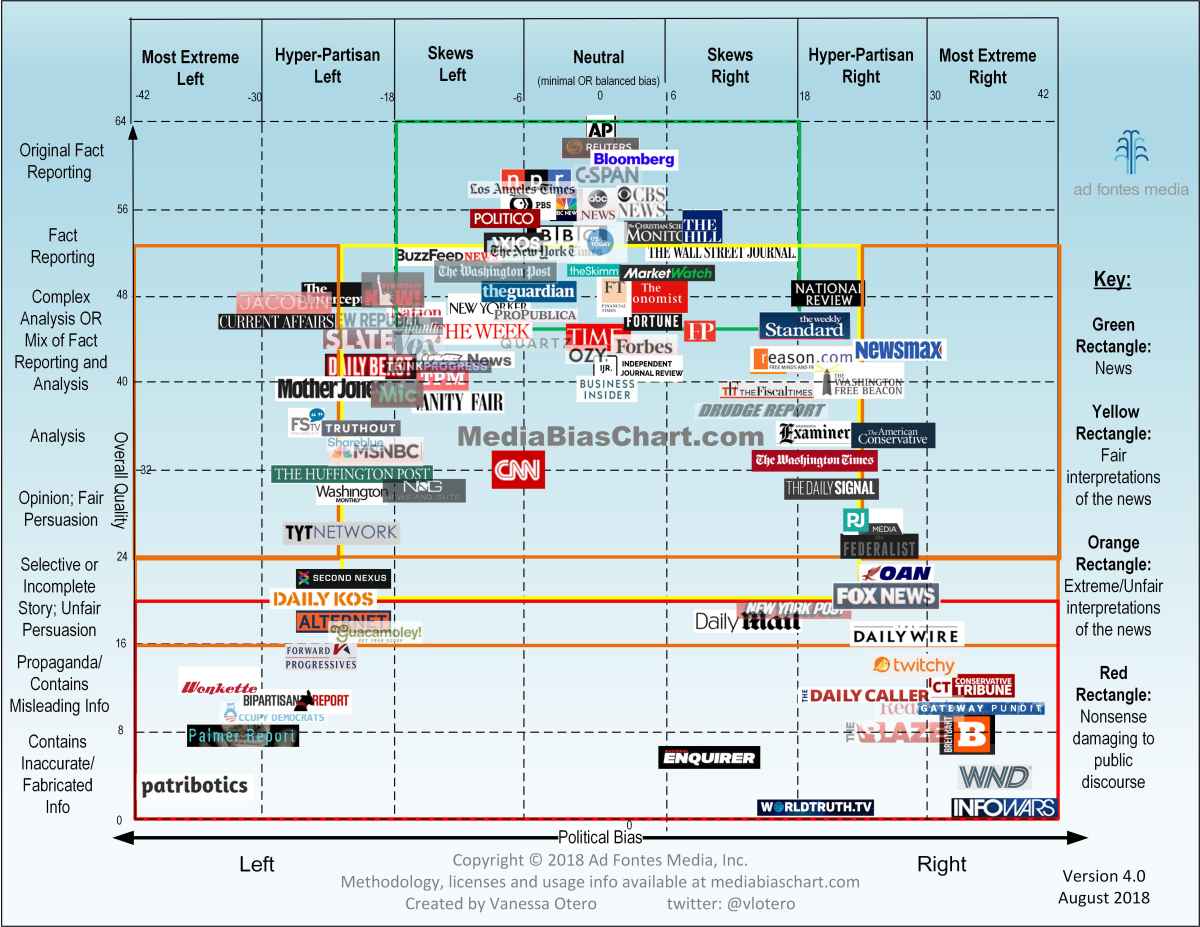It’s no secret in 2019 that objective media sources are being drowned out by outlets producing extremely subjective content or even “fake” news. No matter how aware of the problem we are, it’s not always easy to identify which sources are fact-driven and which are dangerously biased. In reality, it’s almost impossible for media not to have some political bias – the question is, at what point does a source go from reliable to unreliable, from slightly biased to propaganda?
The most respected publications considered to be relatively politically neutral are generally those that:
- Conduct research and present original facts
- Present the original research and facts of another outlet
- Present complex analysis of a situation with multiple perspectives when necessary
Many of the biggest names in news fall into this category including AP, Reuters, NPR, BBC, ABC, NBC, Time Magazine, and The Guardian. Some, like The New Yorker, The Washington Post and Democracy Now skew liberal but are regarded as reliable sources. Others, like the Wall Street Journal, The Hill and the National Review skew conservative but are considered typically reliable.

How are we so easily suckered by “fake news”?
Heavily biased media sources and those that produce “fake news” use our own brains against us. Scientists believe that biases are a glitch or mental barrier in our brains leftover from earlier evolutionary days when we needed social connections to survive. Biases or judgments about various aspects of our worldview or cosmology would have helped us to build an affinity with other like minded individuals and keep those who did not hold the same views at arm’s length.
Some media outlets stoke our cognitive biases by presenting opinions or persuasive editorials (sometimes presented as facts or without including facts), propaganda, made-up facts or only part of the whole story. These types of stories are frequently seen on websites like InfoWars and FOX News on the right and Alternet and the Bipartisan Report on the left.
Knowing which sources are relatively objective is helpful but it doesn’t always solve the problem, especially if the information you are using is taken from a social media clip. Why? Because a well-respected media outlet like the New York Times, for example, cannot always present the background and facts of a story in a short tweet or post.
Verifying and fact-checking makes a big difference
Verifying the information presented on social media or in any article or story is essential to confirming whether or not it is biased and, if so, if that bias has resulted in fake news. When in doubt, visit a website dedicated to identifying media bias and fact checking, such as:
Allsides.com – Newsmap.jp – Mediabiasfactcheck.com – Rationalwiki.org
Another way to confirm bias in a news article is by searching for other articles on the same topic from different news sources. If a sweeping generalization or unlikely detail shows up in one article but not the others, you can assume that it is a suspicious, and likely biased, claim.
The wealth of media at our fingertips can be a powerful tool for fighting against injustice and promoting peace in the world. Just be sure you are using news sources thoughtfully so you don’t unintentionally spread misinformation about topics you care about.
